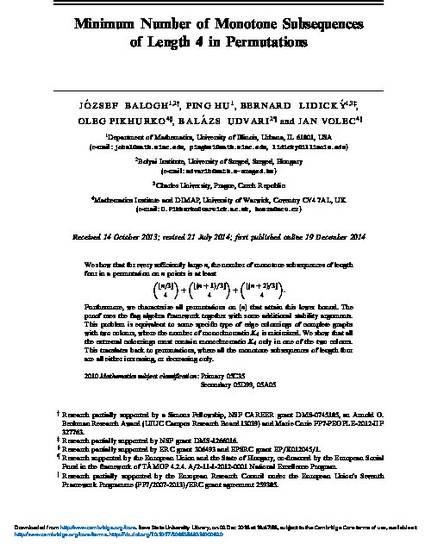
Article
Minimum Number of Monotone Subsequences of Length 4 in Permutations
Combinatorics, Probability and Computing
(2015)
Abstract
We show that for every sufficiently large n, the number of monotone subsequences of length four in a permutation on n points is at least \begin{equation*} \binom{\lfloor{n/3}\rfloor}{4} + \binom{\lfloor{(n+1)/3}\rfloor}{4} + \binom{\lfloor{(n+2)/3}\rfloor}{4}. \end{equation*} Furthermore, we characterize all permutations on [n] that attain this lower bound. The proof uses the flag algebra framework together with some additional stability arguments. This problem is equivalent to some specific type of edge colourings of complete graphs with two colours, where the number of monochromatic K4 is minimized. We show that all the extremal colourings must contain monochromatic K4 only in one of the two colours. This translates back to permutations, where all the monotone subsequences of length four are all either increasing, or decreasing only.
Disciplines
Publication Date
July, 2015
DOI
10.1017/S0963548314000820
Publisher Statement
© Cambridge University Press 2014
Citation Information
József Balogh, Ping Hu, Bernard Lidicky, Oleg Pikhurko, et al.. "Minimum Number of Monotone Subsequences of Length 4 in Permutations" Combinatorics, Probability and Computing Vol. 24 Iss. 4 (2015) p. 658 - 679 Available at: http://works.bepress.com/bernard-lidicky/10/
